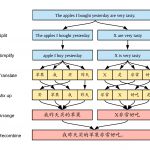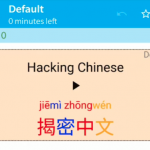Articles in the ‘Learning in class’ category Page 7
-
The beginner’s guide to Chinese translation
Translation from you native language to Chinese is not easy. The most serious problem for many beginners is that they stay too close to the original, which leads to incorrect word order in Chinese. This article presents a method for beginners and lower intermediate students, designed to avoid this problem and improve your translations.
Read → -
Free and easy audio flashcards for Chinese dictation practice with Anki
Audio flashcards can be great for improving basic listening ability or preparing for 听写/聽寫 or dictation. It used to be time-consuming and difficult to do, but with Anki and good text-to-speech engines, it’s now both easy and free!
Read → -
Training your Chinese teacher, part 1: Introduction
Finding a good Chinese teacher is not easy, but there are many things you can do to get more out of the time you spend with a teacher, and in a sense, train him or her to better suit your needs and preferences.
Read → -
How and why to learn and teach Chinese through games
This article is a follow-up to a keynote presentation and a workshop held at the 15th Annual Chinese Teaching Conference at University College London. Even though the original target group is teachers of Chinese, the article is relevant for students as well.
Read → -
Can you learn Chinese faster by making it harder?
Throwing yourself into very challenging situations can be great for language learning, but so can focusing on large volumes of easier content too. So when should you use which approach? This article discusses if you can learn faster by making it harder.
Read → -
Task-based Chinese learning and teaching
Task based language learning and teaching is built around working with tasks in the target language with a clear focus on meaning (communication). Focus on form should come after the task has been completed.
Read → -
A student’s guide to comprehension-based learning
In this third and final article, the focus is on how students can make their own learning comprehension-based, with or without a teacher. It draws from the principles and ideas of the previous articles and allows you to apply these to your own learning.
Read → -
The benefits of a comprehension-based approach for teaching and learning Chinese
Diane Neubauer continues her series of guest articles about comprehension-based approaches to teaching and learning Chinese. In this the second part, the focus is on principles and motivations for using a comprehension-based method. There’s also an overview of teaching practices that fall into this category.
Read → -
An introduction to comprehension-based Chinese teaching and learning
This guest article by Diane Neubauer introduces comprehensible input and what it can do for us as language learners and teachers. It’s the first part of a series of three articles, focusing on comprehension-based methods for learning and teaching.
Read → -
Learn Chinese implicitly through exposure with a seasoning of explicit instruction
Should you learn Chinese implicitly through exposure and usage, or explicitly through description and instruction? The answer is that adults need both, but that explicit learning is often used too much.
Read →









